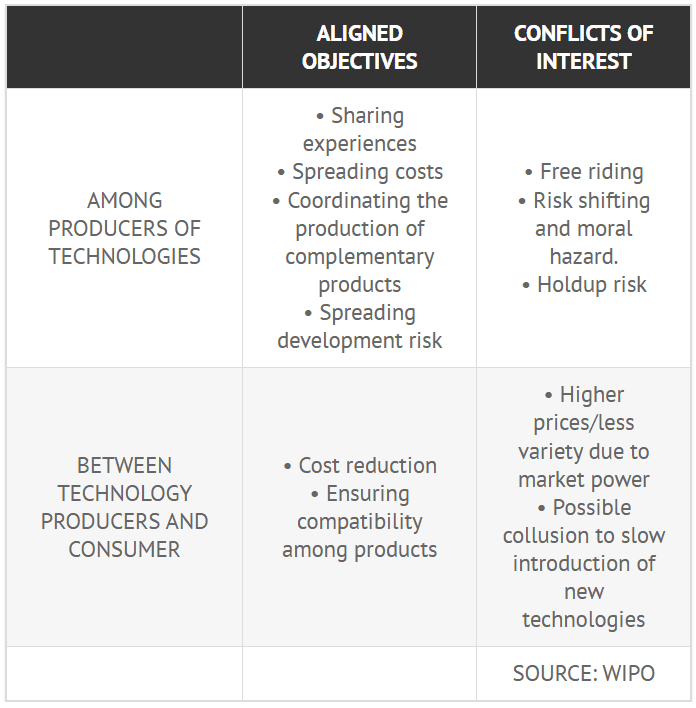Share
Share

Collaborative IP - Needs,Advantages and Challenges
The administration and lifecycle management of IP rights in companies and other entities involved in filing patents to protect their innovations is commonly referred to as IP Management.
Traditionally, inventions are developed in a closed and secure environment and in most cases entirely in-house. Over time such closed approaches have acceded to collaborations. Such co-inventive and co-development contracts have become common among established players in the industry. Usually, these agreements presume subsequent licensing accord with a third party or co-promotional agreement between the collaborating companies if they plan for commercializing the product or service developed through their coordinated endeavors.
In most cases, it is far more effective for multiple organizations to work together in developing a complex technology rather than attempting such a huge task in-house individually. Collaboration allows a group of corporations to work up to their full individual strengths at a much lower expense. This results in a superior product with a larger commercial perspective.
Need for Collaborative IP
The key driving factors here are cost-sharing and faster time to market. Collaborating with a player having analogous needs helps in cost-reduction; allowing all the parties to share development risks and embark on projects that might otherwise be considered too risky. The drivers for collaboration in IP depend on the industry type.
In the 20th century, the manufacturing sector was heavily involved in IP collaborations, while the early 21st century has seen a rise of the ICT (Information and Communication Technology) industry into the Collaborative IP sector. For the past two decades, the ICT industry accounts for most of the patent pools, there can be more such arrangements in near future. For example, the biomedical research community has expressed a deep interest in the development of patent pools for biomarkers for cancer, HIV, and SARS, and bio-technologies applied to agriculture and animal cloning.
Advantages of IP Collaboration
Key benefits of IP Collaboration include complimentary development of the involved parties, creation of a new market, superior technological advancement, better product/service, and customer satisfaction. Patent pooling offers a variety of benefits and paybacks for organizations to cooperate leading to a successful IP collaboration.
Collaboration divides the effort and increases the efficiency of the firms exploring the same technological area. Even in the automotive industry, the ‘Big Four’ Japanese motorcycle brands – Honda, Yamaha, Suzuki, and Kawasaki are collaborating in IP regarding the development of electric vehicle – battery swapping technology.
Challenges with IP Collaboration
A fair, reasonable, and non-discriminatory association of organizations lead to successful IP collaboration. However, like most associations, collaborative IP also has some issues to deal with. Some of the main problems faced by the involving parties include information sharing, revenue sharing, portfolio management, potential knowledge leakage, confidentiality breach, collaboration expansion, and anti-competitive practices. Intellectual property is overlooked in many instances of IP collaborations. Sometimes, the big players in collaboration might be the key holders of a patent or might enjoy at the cost of the small ones. Often, collaborations’ negligence to the questions like ownership of IP involved or who will manage what part of the portfolio, can have serious and costly consequences where extensive collaboration and co-inventions are involved.
Coalitions can also open the door to anti-competitive behavior in such markets. Such associations become problematic when they pursue maximizing their return at the cost of consumers. This reduces the commitment of other participating organizations to invest in the R&D causing delay in the development and introduction of improved technology with higher costs
Aligned objectives and conflicts of interest in R&D alliances

Need for Better IP Management in Collaborative IP Engagements
Most of the issues with collaborative IP can be handled well through IP management. Participating organizations with clear objectives like with whom and why to go into collab also need to give equal importance to managing the IP that results from such an effort. A well-thought IP management plan aids the collaborating parties in identifying their objectives, clearing their expectations about commercialization and development milestones, resolving who owns what (Background IP, Forward IP, and Joint Venture IP), and in coordinating the formalities and responsibilities like having agreements with terms and conditions in place, for managing the intellectual property.
Similarly, a well-drafted co-development agreement, focusing on IP and IP ownership, protects and reduces the potential risks of dispute among all the parties in the collaboration and lessens the hazards of adverse legal action.
